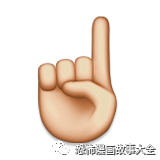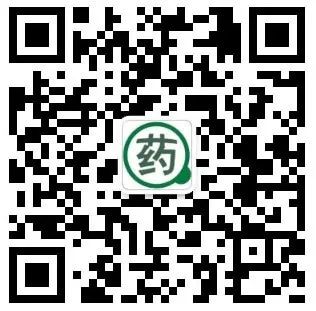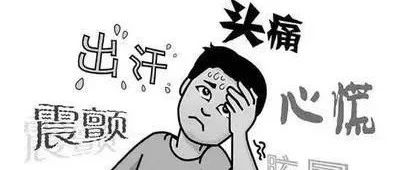 Click on 【Herb Query】, then click the upper right corner 【···】
Click on 【Herb Query】, then click the upper right corner 【···】
Set as Starred/Top
Starred/Top for easy access
for easy access
Research has confirmed that Aconite (Fu Zi) contains six alkaloids, including aconitine and mesaconitine. These substances have significant effects such as cardiotonic, diuretic, stimulating the vagus nerve center, and anti-inflammatory analgesic properties, but they are highly toxic, primarily damaging the nervous system and heart.
Symptoms of poisoning generally appear 30 minutes after ingestion, with some cases taking one to two hours. Initial symptoms include numbness of the lips, tongue, and limbs, followed by nausea, vomiting, agitation, and then coma, with muscle spasms in the limbs and neck, rapid breathing, cold limbs, weak pulse, decreased blood pressure and body temperature, arrhythmia, and ECG (electrocardiogram) indicating multiple premature ventricular contractions. In severe cases, sudden death may occur. The direct causes of poisoning are the use of raw Aconite, overdose, and consumption of Aconite (including Aconitum) alcoholic preparations.
Rescue Methods for Aconite Poisoning
1. Repeated gastric lavage with potassium permanganate or strong tea.
2. For symptoms primarily related to vagus nerve stimulation (bradycardia, conduction block), use atropine; for significant ectopic arrhythmias (premature ventricular contractions, ventricular tachycardia), use lidocaine.
3. Electrical cardioversion.
4. Symptomatic treatment as needed.
5. Chinese herbal rescue formula: 30 grams of Jin Yin Hua (Honeysuckle), 100 grams of Lu Dou (Mung Bean), 60 grams of Sheng Gan Cao (Raw Licorice), decocted in water for internal use; or honey for internal use, 120 grams each time, up to 500 grams if necessary.
How to Avoid Aconite Poisoning
1. Only use processed Aconite; raw products are prohibited.
2. Strictly adhere to indications; do not use single formulas containing Aconite (especially those containing Aconitum) indiscriminately.
3. Prevent overdose. Zhang Zhongjing used Aconite in warming the meridians and relieving pain at doses of 18-27 grams; for warming and tonifying the spleen and kidney Yang, 9-18 grams; for mixed cold-heat and accumulation of cold due to parasites, 6-99 grams.
4. For large doses of Aconite, it must be decocted for 1-3 hours before adding other herbs. Experiments have shown that after prolonged decoction, aconitine is hydrolyzed to benzoylaconine, significantly reducing toxicity. Some data indicate that after heating treatment, the toxicity of Aconite is only 1/200 of the original, but its cardiotonic components remain intact after decoction. (Refer to “Pharmacology of Common Chinese Herbs” by Lü Lanxun et al., Shaanxi Science and Technology Press)
5. Aconite should be decocted with Gan Jiang (Dried Ginger) and Gan Cao (Licorice) to chemically alter its alkaloids, greatly reducing toxicity. This combination is precisely the Si Ni Tang (Four Reversal Decoction) from the “Shang Han Lun” (Treatise on Cold Damage), hence also known as the “Zhang Zhongjing Aconite Combination Method”.
“Ten Prohibitions and Three Questions”
Based on the experiences of medical practitioners throughout history, it has been suggested that the use of Aconite should adhere to the “Ten Prohibitions and Three Questions”.
“Ten Prohibitions”: 1. Do not use for facial redness; 2. Do not use for red tongue with yellow coating; 3. Do not use for delirium and agitation; 4. Do not use for scanty red urine; 5. Do not use for rapid and strong pulse (these five clinical manifestations indicate Yang heat excess, and Aconite must not be used. However, clinical differentiation from false heat syndrome is necessary, such as a face red as if painted, repetitive low speech, floating pulse without root, etc., which indicate false Yang rising and can use Aconite to return fire to the source). 6. Do not use for patients with severe liver and kidney diseases and myocardial diseases; 7. Do not use for patients with weak constitution and Yin deficiency with internal heat; 8. Do not use during pregnancy; 9. Do not use for patients with atrioventricular block; 10. Do not use with Ban Xia (Pinellia), Gua Lou (Trichosanthes), Bei Mu (Fritillaria), etc.
“Three Questions”: Ask the patient how their sleep is after taking Aconite, how much urine they produce, and their state of activity. In short, after taking Aconite, if the patient sleeps peacefully, has increased urine output, and can move freely without agitation, this is a normal response to Aconite. Conversely, if not, consider it a contraindication for Aconite use.
End of text. Thank you for your patience in reading. If you find it helpful, please click “ Like” and “~
Like” and “~
▼Previous Highlights▼ The Spread of Traditional Chinese Medicine Culture in Japan by Jianzhen The Differences Between Warming Yang, Tonifying Yang, and Unblocking Yang
Herb Query

Long press to recognize the QR code to follow
Herb Query is the official public account for Chinese herbal queries, making it convenient for users to find the desired herbal information anytime and anywhere, greatly promoting the essence of Chinese herbal medicine with a history of over 5000 years.

